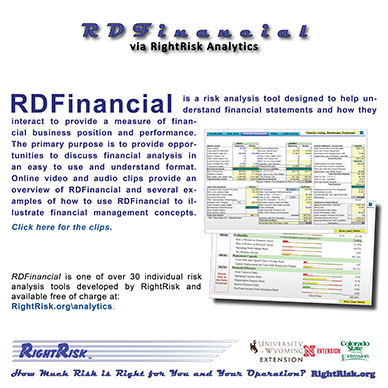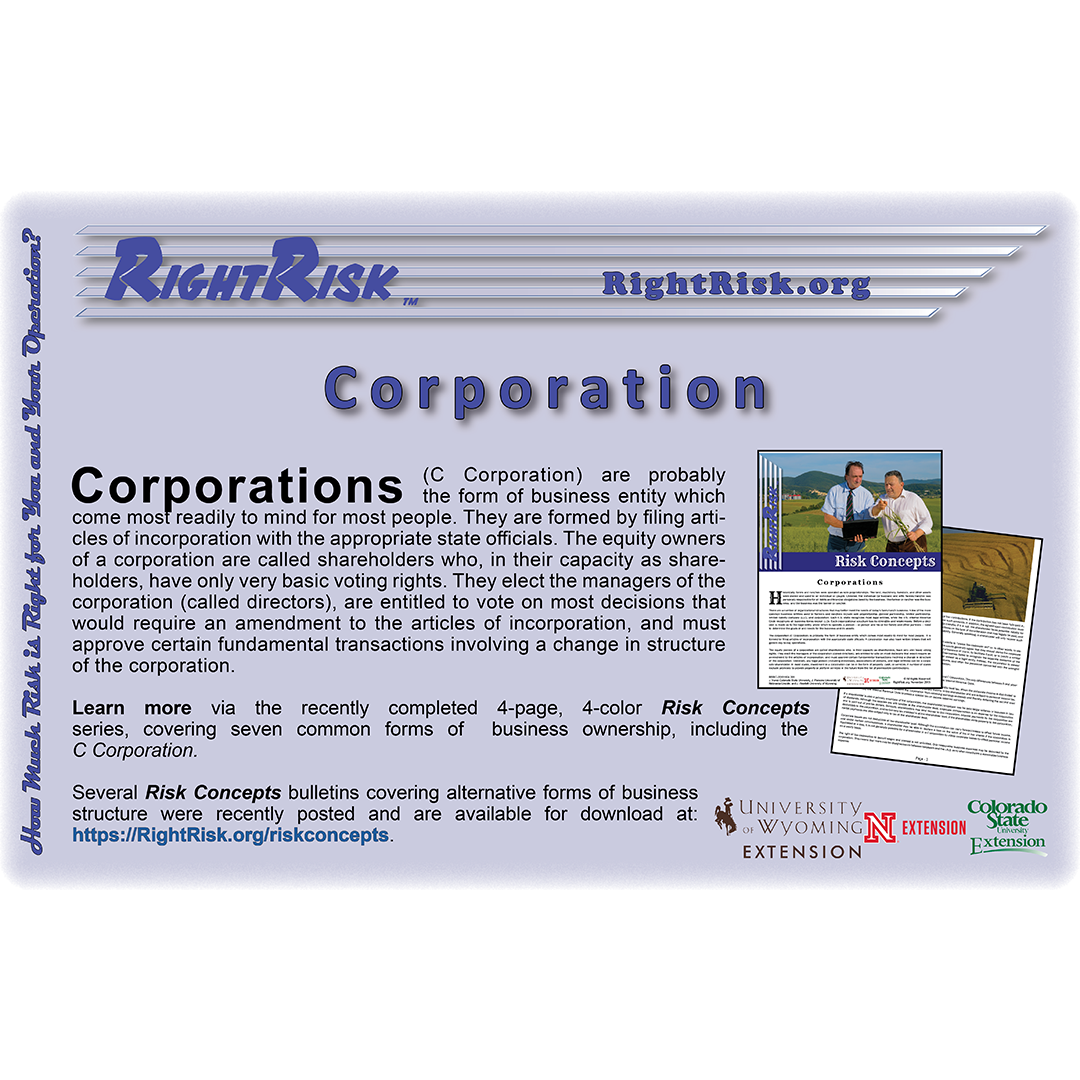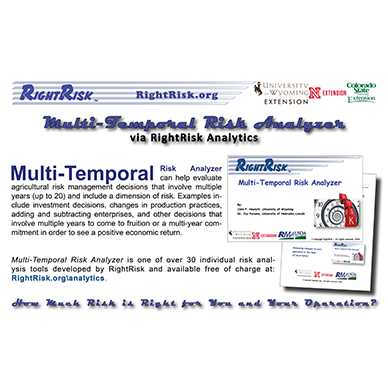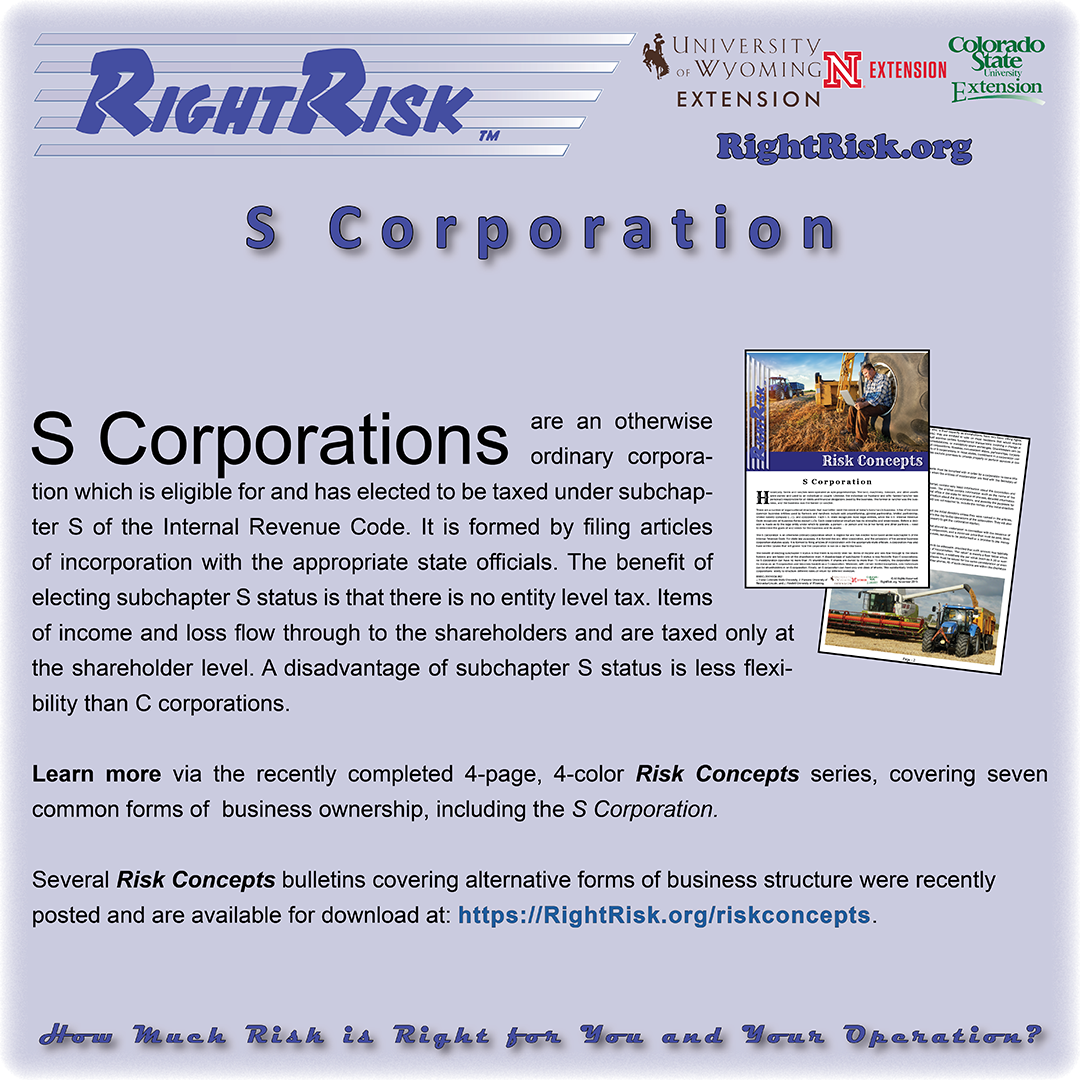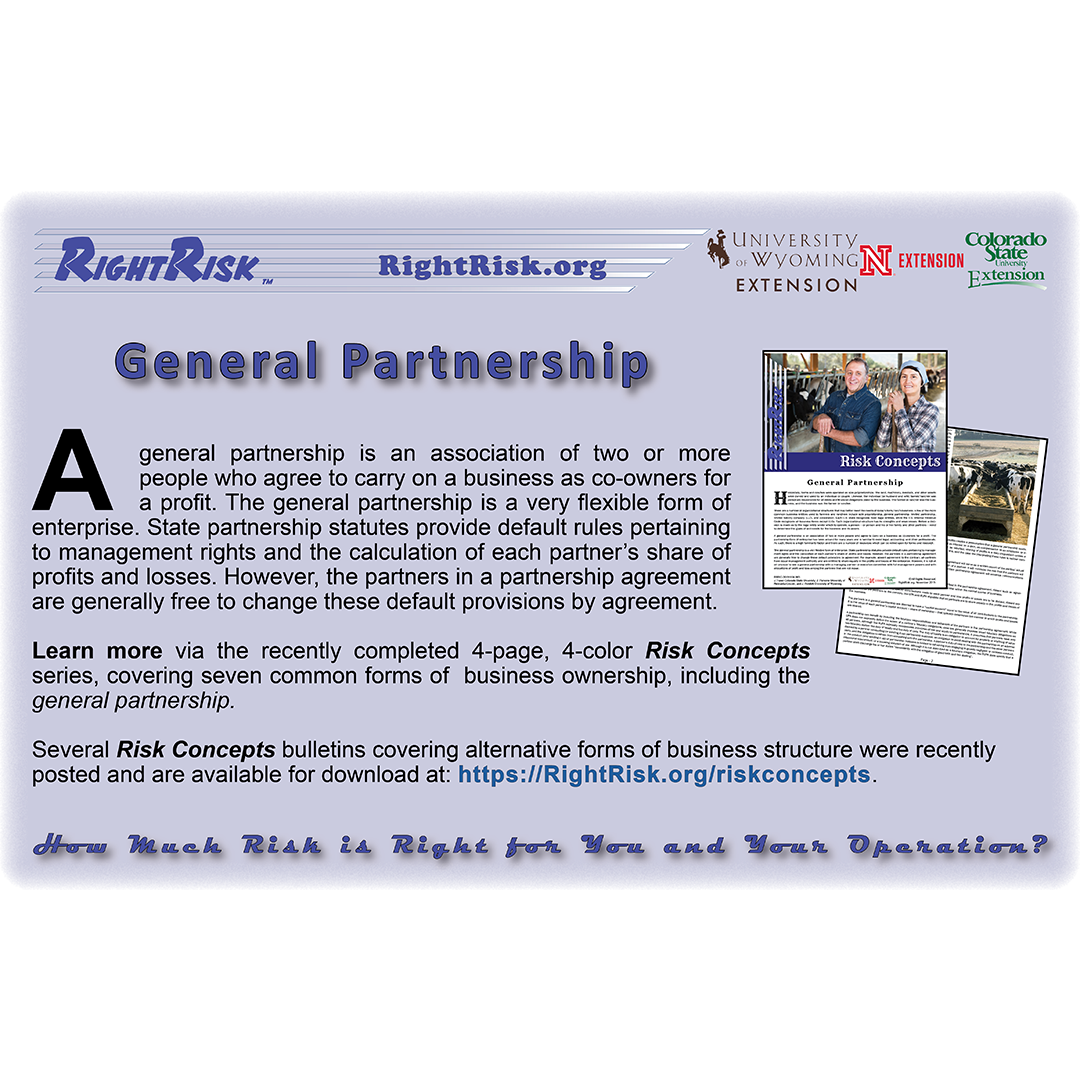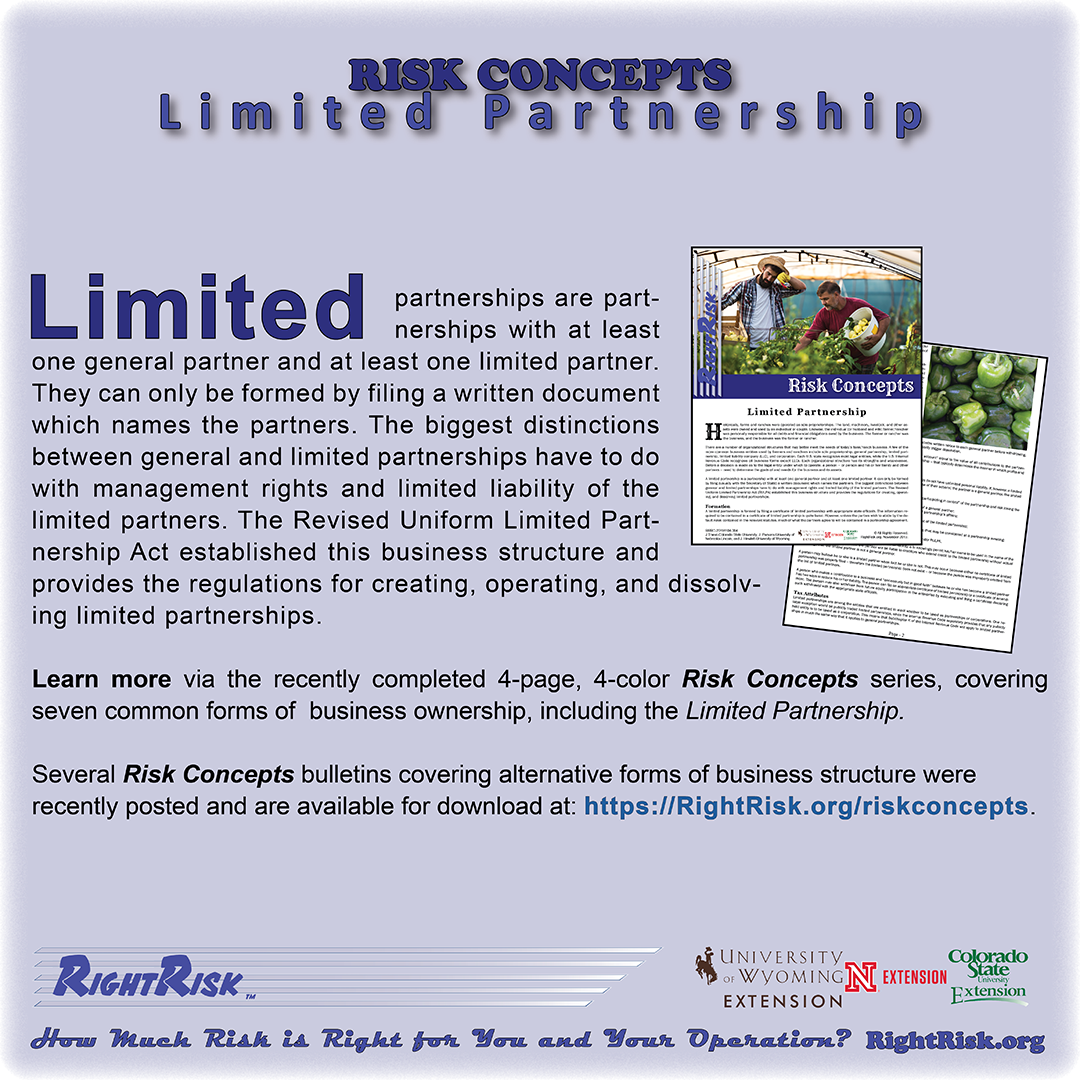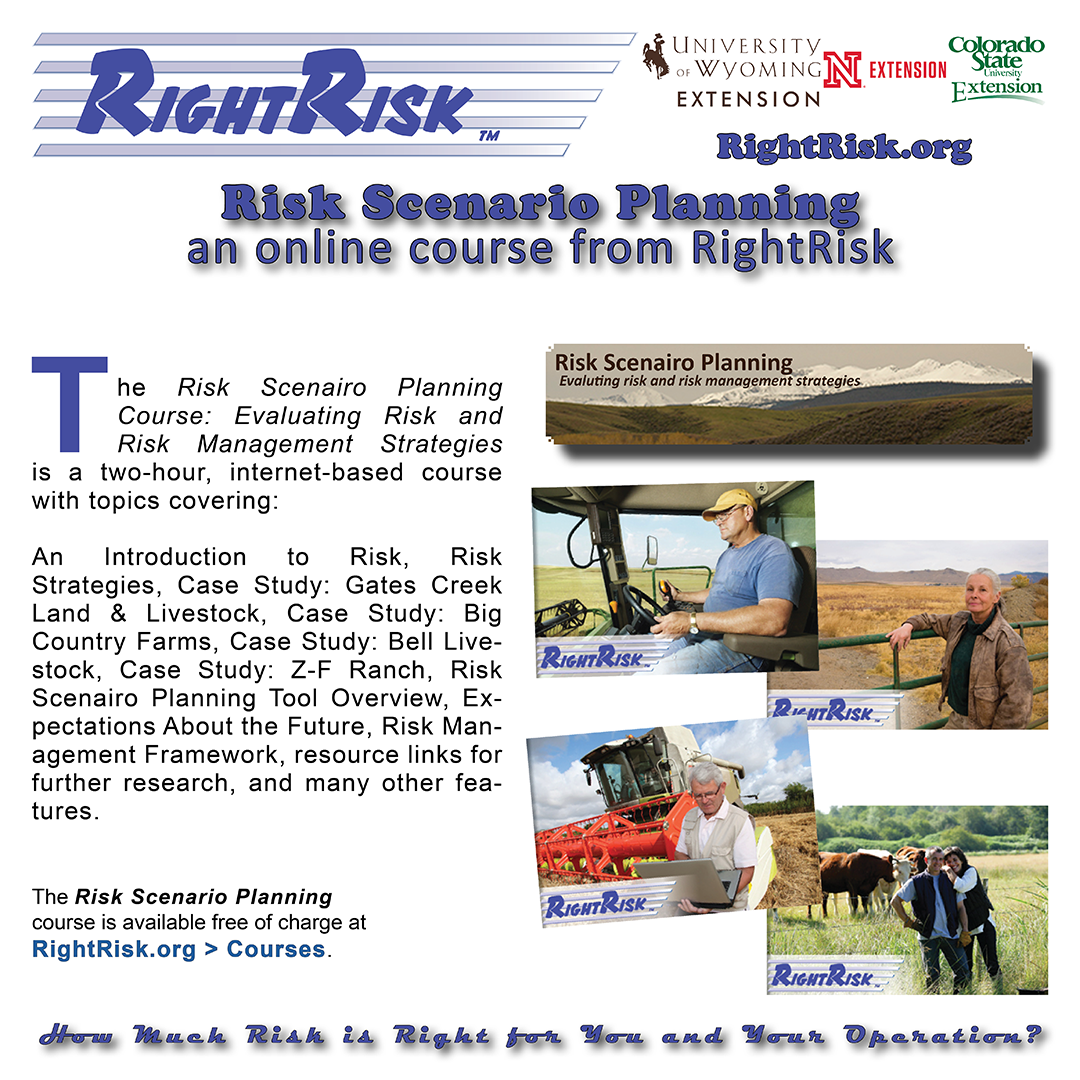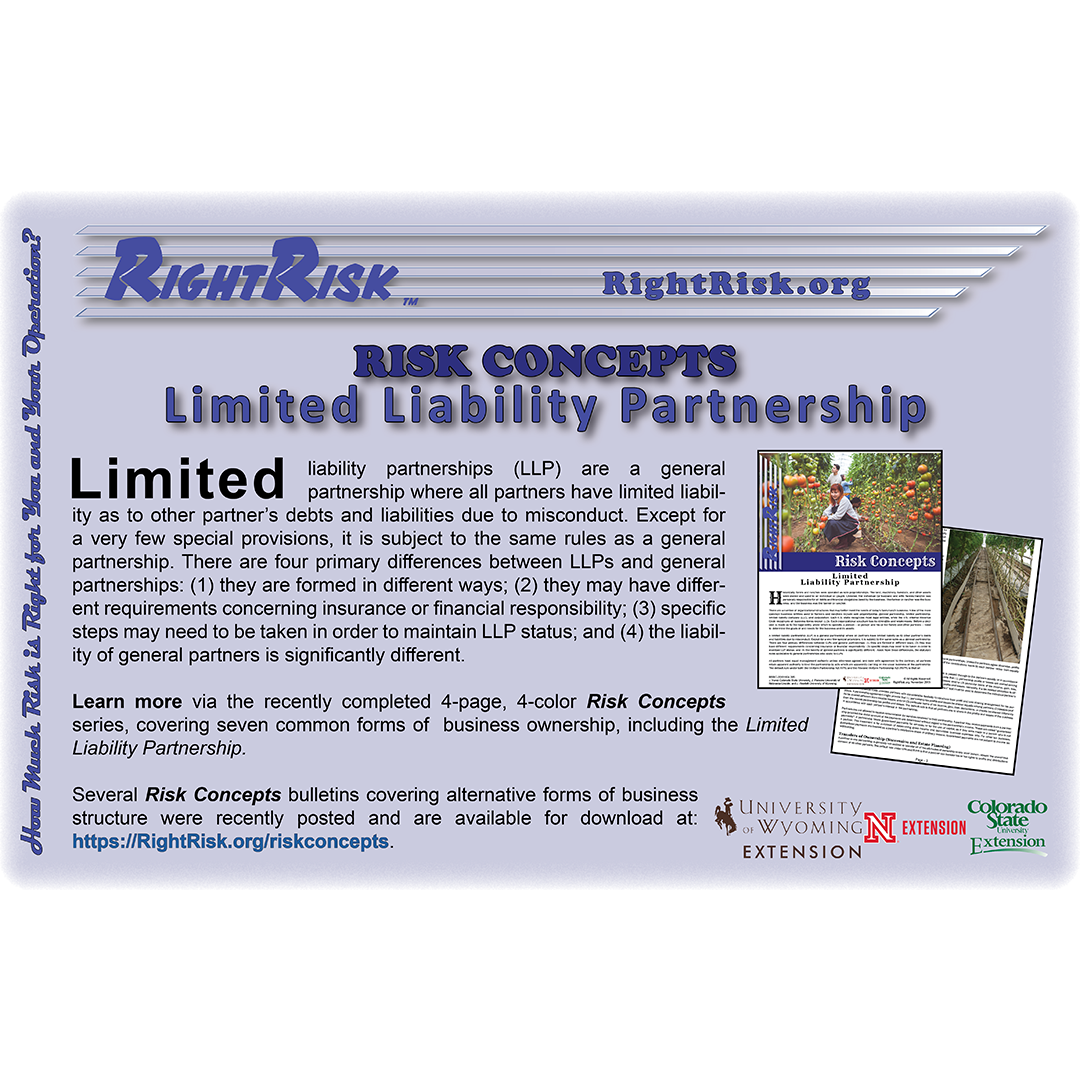RDFinancial is a risk analysis tool designed to help understand financial statements and how they interact to provide a measure of financial business position and performance. The primary purpose is to provide opportunities to discuss financial analysis in an easy to use and understand format. Online video and audio clips provide an overview of RDFinancial and several examples of how to use RDFinancial to illustrate financial management concepts.
RDFinancial tool is one of over 30 individual risk analysis tools developed by RightRisk and available free of charge at:RightRisk.org > Analytics.
